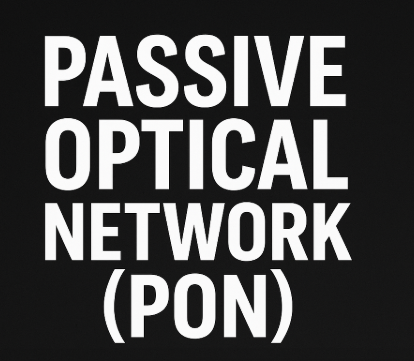
Passive Optical Network (PON): The Future of High-Speed Connectivity
OptechTWShare
Passive Optical Network (PON) – Next-Generation Fiber Broadband
A passive optical network (PON) is revolutionizing high-speed internet delivery with its cost efficiency, scalability, and low maintenance needs. By eliminating active electronic components between the service provider and the end-user, PON reduces power consumption and operational complexity—making it a key technology for modern broadband and data center connectivity.
How Passive Optical Networks Work
PON uses optical splitters to distribute a single fiber signal to multiple endpoints without powered equipment in the field.
-
OLT (Optical Line Terminal): Located at the service provider’s central office, transmitting downstream data.
-
Splitter: Divides the fiber signal passively, usually at a 1:16, 1:32, or 1:64 ratio.
-
ONT/ONU (Optical Network Terminal/Unit): Installed at the customer premises to receive the signal.
Benefits of Passive Optical Networks
-
Cost Efficiency – No powered network elements in distribution reduce CAPEX and OPEX.
-
Energy Savings – Passive components consume no electricity.
-
Long Reach – Supports up to 20 km coverage from central office to user.
-
High Bandwidth – Ideal for next-generation broadband services.
-
Low Maintenance – Fewer active components mean fewer failure points.
PON Applications in Modern Networks
-
Fiber-to-the-Home (FTTH) and Fiber-to-the-Building (FTTB) broadband services
-
Enterprise Campus Networks for cost-effective large-scale connectivity
-
Data Center Interconnects using PON principles for simplified cabling
-
5G Backhaul for connecting distributed radio units
Integrating QSFP-DD 800G into PON-based Data Centers
For data center operators adopting PON principles for internal or inter-building fiber distribution, QSFP-DD 800G optical transceivers play a crucial role in delivering ultra-high bandwidth with minimal latency.
A Taiwan AI Optical Transceiver TAA Manufacturer offers QSFP-DD 800G solutions designed for:
-
High-performance computing (HPC) and AI workloads
-
Long-range interconnects within distributed data centers
-
RoCE and InfiniBand applications requiring lossless transmission
These transceivers ensure scalable, future-proof deployments with TAA compliance for US government and enterprise networks.
Future of Passive Optical Networks
As demand for higher bandwidth continues to rise—driven by cloud services, AI, and IoT—PON technology will evolve toward NG-PON2 and beyond, delivering multi-gigabit symmetrical speeds over a single fiber. Combining PON with 800G optical transceivers further enhances flexibility, scalability, and network longevity.
Conclusion:
A passive optical network is a cost-effective, energy-efficient, and future-ready solution for broadband, enterprise, and data center connectivity. By integrating QSFP-DD 800G from a Taiwan AI Optical Transceiver TAA Manufacturer, network operators can achieve unmatched performance, reliability, and scalability.
